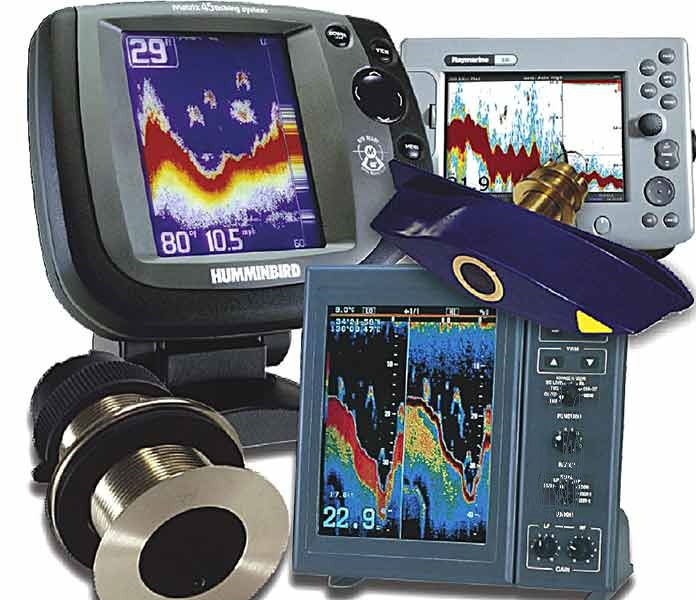When your depth sounder or fish finder is not performing up to par, these procedures will help you make a diagnosis.
Modern electronics have greatly improved the performance and reliability of depth sounders and fish finders, but they occasionally fail. The power output of a depth sounder unit is important in relation to the unit's range and accuracy. The greater the output power, the greater the depth range and signal return. Depth transducers are usually made of a crystal made up of different elements, namely the crystal, or piezoelectric element, which converts the electrical signal into an audio signal. Never shake or strike the power transformer as this may damage the crystal.

Problem: Power, No Display
If the depth gauge turns on but there is no display, there are four items to check.
Performing basic checks on the above electrical system.
Inspect the connectors and pins of the display unit and power adapter for corrosion. Make sure the connectors and connecting pins are straight. Use caution when straightening the bent pin because it is relatively fragile. Often the connectors are not inserted properly or the connector is not bonded which leads to corrosion.
Check fuses and circuit breaker connections.
Disconnect the plug from the depth transducer and check that the amplifier unit is turned on. If not, you need the help of the manufacturer.
Problem: The Display Froze
If your speaker's display freezes, check the following:
Performing basic checks on the above electrical system.
Check that the sound unit is working.
Make sure that two audio meters or fish finders are not operating at the same time. Two boats using sound equipment in close proximity to each other can cause crosstalk if similar sound frequencies are used.
Perform the basic interference check above.
Inspect all cables for damage, cuts, or fatigue. Deep beam-mounted transducer cables are very vulnerable to damage, especially as a result of towing. If your screen stays dark, you'll need the manufacturer's help.

Problem: No Bottom Readings
If the audio device works but there are no bottom readings, perform the following tests:
For a new installation, ensure that the power adapter is positioned correctly.
Perform basic electrical system checks for “Display Defect.”
Inspect the transducer for any growth, damage, or obstructions around the transducer face. Inspect the power adapter for signs of damage or paint smudges. Clean the transducer face with warm water and soap, never heavy abrasives. Do not apply antifouling paint to the surface of the power transformer. Small voids and air bubbles in the paint reduce sensitivity.
Inspect the connectors and pins of the display unit and power adapter for corrosion.
Make sure that your audio device is not trying to read depth beyond its range. The upper and lower limit settings can be set to an area where there is no sea bottom. Refer to your operator's manual for the unit's sensitivity specifications and ensure your settings are correct. Sensitivity control adjusts or normalizes returns. If the unit is set to low sensitivity, you will not be able to detect lower details. High sensitivity settings bounce signals back to everything and cause screen noise. Most sounders and fish finders have an automatic sensitivity adjustment, which compensates for ambient water conditions and depth.
Check for excessive propeller cavitation. Also, cracked or bent props on high-speed boats can worsen this condition.
When the boat has a transducer switch, unplug each transducer and connect it to the sound device. The switch may cause problems.
If all else fails, you're out of the DIY realm and need help from an authorized repairer.
Issue: Incorrect Depth Readings
If your sound meter is indicating incorrect depths, do the following:
If the installation is new, check that the position of the transducer is correct.
Inspect the transducer for marine growth and damage.
Make sure that there are no two audio devices operating near each other.
Check the power adapter connectors and pins for any signs of corrosion.
Perform a basic cavity check.
Ensure that the upper and lower depth limit settings are set correctly.
Inspect the power adapter cables for damage.
Related Articles:
Simple Fish Finder Troubleshooting Steps for Success
5 Fish Finder Installation Tips for Success and Catching More Catfish
Outrigger Guide for Beginner’s: Two Great Options from TACO MARINE
Spread It Out: A Guide to Adding Outriggers to Your Boat